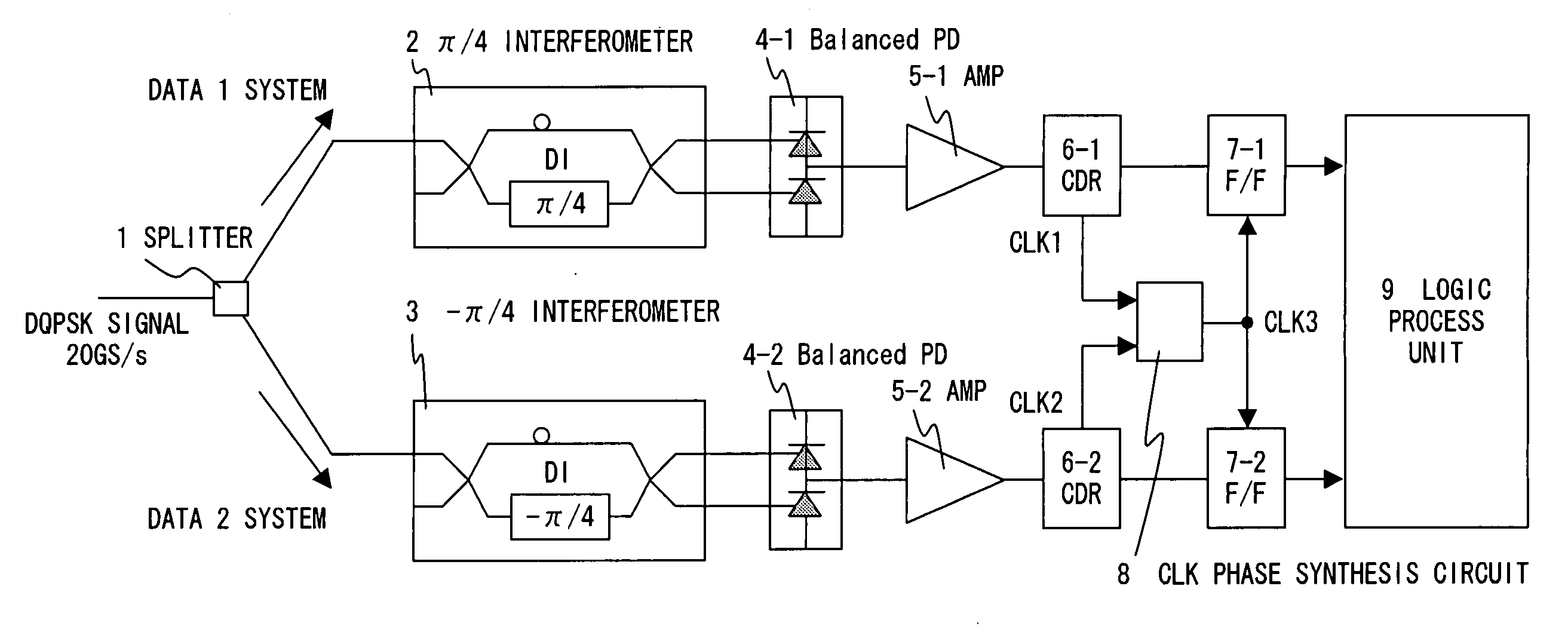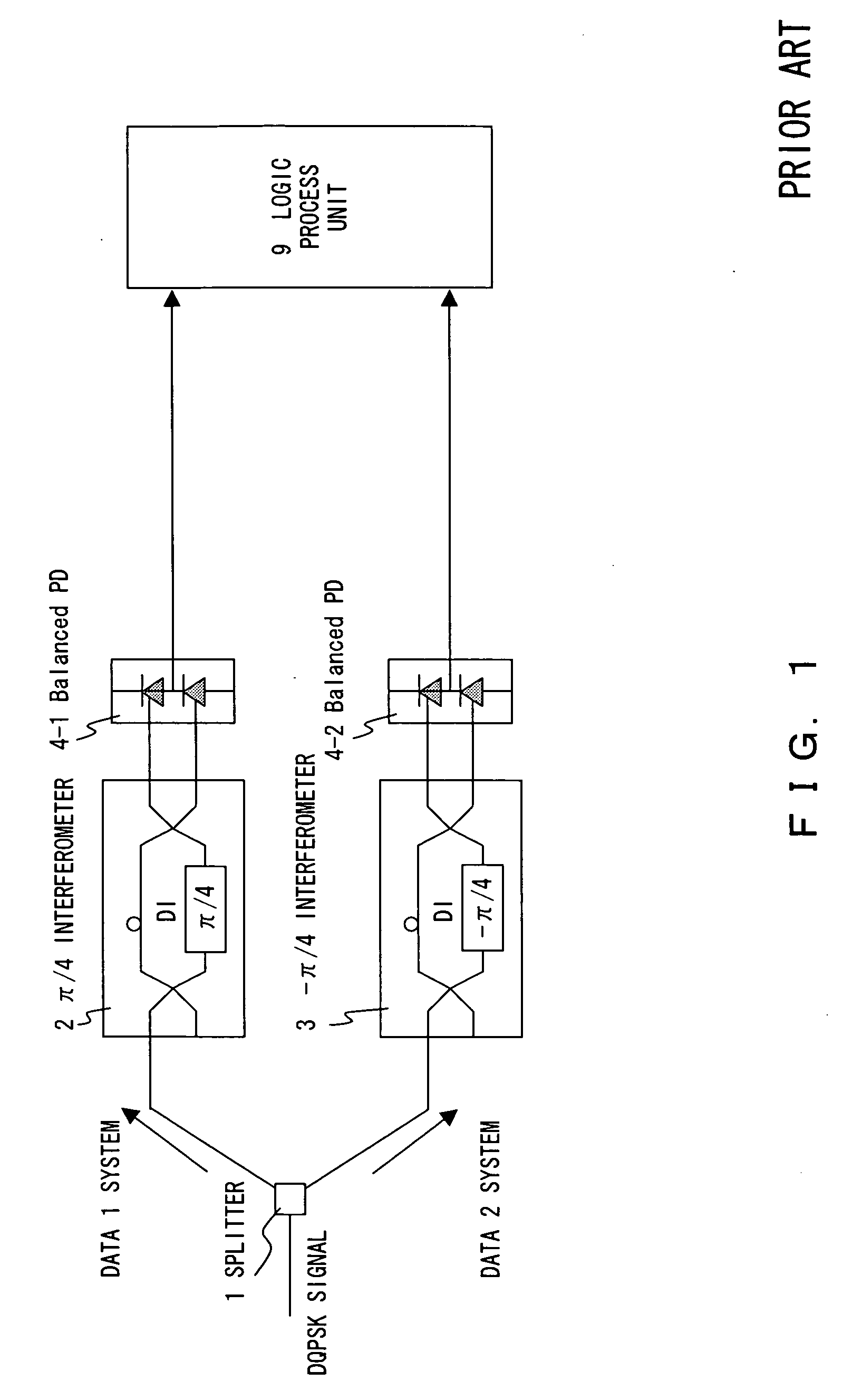DQPSK optical receiver circuit
- Summary
- Abstract
- Description
- Claims
- Application Information
AI Technical Summary
Benefits of technology
Problems solved by technology
Method used
Image
Examples
Embodiment Construction
[0023]FIG. 2 shows a configuration of an embodiment of the present invention.
[0024] In FIG. 2, components the same as those shown by FIG. 1 are assigned the same component reference numbers, and the descriptions thereof are omitted.
[0025] A splitter 1 splits an optical signal; a π / 4 delay interferometer 2, −π / 4 delay interferometer 3, balanced photodiodes 4-1 and 4-2 convert the split optical signals into electric signals; amplifiers 5-1 and 5-2 amplify the electric signals, respectively; and CDRs (Clock and Data Recovery) 6-1 and 6-2 are inserted individually into the Data 1 and Data 2 systems. Then, the VCO (Voltage Controlled oscillator) outputs of the two CDRs 6-1 and 6-2 are provided as clock signals CLK 1 and CLK 2, and input to a CLK phase synthesis circuit 8 for generating an intermediate phase thereof. The CLK phase synthesis circuit 8 then outputs an inverted signal (i.e., CLK 3; however, inversion is optional) of a clock signal having an intermediate phase of the clock ...
PUM
 Login to View More
Login to View More Abstract
Description
Claims
Application Information
 Login to View More
Login to View More - Generate Ideas
- Intellectual Property
- Life Sciences
- Materials
- Tech Scout
- Unparalleled Data Quality
- Higher Quality Content
- 60% Fewer Hallucinations
Browse by: Latest US Patents, China's latest patents, Technical Efficacy Thesaurus, Application Domain, Technology Topic, Popular Technical Reports.
© 2025 PatSnap. All rights reserved.Legal|Privacy policy|Modern Slavery Act Transparency Statement|Sitemap|About US| Contact US: help@patsnap.com



